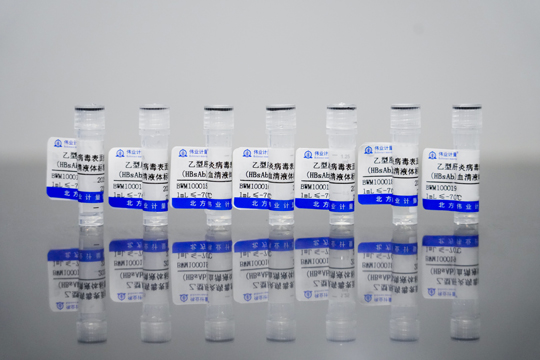1. Promote the implementation of the standardization strategy
Chinese implementation of the standardization strategy is an important instruction and requirement of General Secretary Xi Jinping, an important direction of the CPC Central Committee and the State Council for the national standardization work, and one of the three major strategies that the State Administration for Market Regulation clearly requires to do well. In order to systematically grasp the connotation and tasks of the implementation of the standardization strategy, the General Administration (Standard Committee) entrusted the Chinese Academy of Engineering to carry out the research on "China Standard 2035", and regarded the development of the "Chinese Standard 2035" project research as the implementation of the spirit of the General Secretary's important instructions and to promote the implementation of the standardization strategy. major move.
The "China Standard 2035" project research was officially launched in March 2018. Dozens of academicians of the Chinese Academy of Engineering and more than 300 experts from well-known domestic universities and scientific research institutions participated in the project research.
The "China Standard 2035" project sets up a comprehensive topic "Standardization Strategy Orientation and Goal Research", and three majors: "China Standardization System, Method and Evaluation Research", "Research on Standardization System Supporting High-quality Development", and "Standardization Military-Civilian Integration Development Strategy Research" subject. The project is planned to take two years to form a research report on the "China Standard 2035" project, and put forward consulting opinions and suggestions for the preparation and implementation of China's standardization strategy programmatic document.
2. Deepen the reform of standardization work
According to the State Council's "Deepening Standardization Work Reform Plan", the general goal of standardization reform is to establish a new standard system in which the standards set by the government and the standards set independently by the market are coordinated and matched, and a new standard system that is coordinated and coordinated, operates efficiently, and is governed by the government and the market. It forms a standardization work pattern of government guidance, market drive, social participation, and coordinated promotion, effectively supporting the construction of a unified market system, making standards a "hard constraint" on quality, and promoting China's economy to a mid-to-high-end level. The reform will be carried out in three stages, one every two years from 2015 to 2020, and the reform has now entered the final stage.
Deepening reform is the driving force for the innovation and development of standardization work, which needs to be continuously promoted. At present and for a period of time in the future, we will mainly advance the work in five areas. The first is to further integrate and streamline mandatory standards, effectively improve the standards in the fields of people's livelihood and public safety, and resolutely adhere to the bottom line of public safety, so that the people can buy, use, and eat with confidence. The second is to further improve the efficiency of the formulation and revision of national standards, and shorten the average standard formulation cycle from the current 36 months to within 24 months. The third is to strictly limit the scope of government-led standard formulation, strengthen standard review and review, and effectively reduce the number and scale of government standards, so as to leave sufficient space for the market to independently formulate standards. Fourth, take practical and effective measures to encourage market entities to focus on improving product quality, industrial quality and international competitiveness, cultivate and develop group standards, liberalize and invigorate enterprise standards, fully release the standardization innovation vitality of enterprises and social organizations, and make standardization a market entity to improve business operations. , A competent helper for development. The fifth is to increase the guidance, coordination and supervision of the reform of local and industry standardization work, implement the relevant provisions of the new "Standardization Law", and strive to achieve early results in the comprehensive reform of standardization.
3. Quickly implement "standardization +"
The characteristic of standardization work is to integrate with related fields and actively serve development. "Standardization +" is to take an active role, to actively stick to, to rely on, and to integrate into, to "alize" standards into all fields and levels of economic and social development, and to achieve the integration of standardization and technological innovation, industrial development, and social governance. . In recent years, China has initially formed work modes such as "standardization + modern agriculture", "standardization + advanced manufacturing", "standardization + social governance and public services", and "standardization + ecological civilization", which have achieved remarkable results.
In the next step, the implementation of "standardization +" will mainly focus on the following three aspects: First, on the surface, closely integrate "standardization +" with the implementation entities such as localities, industries and enterprises, and organize the development of "hundreds and thousands of pairs of "Standards Upgrading" action, to create 10 standard international innovation cities, cultivate 50 standardization leading formats, and launch 1,000 enterprise standard "leaders". Second, in terms of stock, closely combine "standardization +" with key areas of economic transformation and upgrading, accelerate the implementation of standard upgrade and upgrade projects, focus on building an all-factor, full-chain, multi-level modern agricultural standard system, and vigorously improve steel, cement, The quality and safety standards of traditional industries such as chemical industry, electrolytic aluminum, and flat glass will promote the standardized development of service industries such as housekeeping, elderly care, tourism, and logistics, and drive the overall quality of economic development to jump. The third is to closely combine "standardization +" with new kinetic energy such as new technologies, new business forms, and new models, vigorously promote the pilot project of new industries and new kinetic energy standards, build a number of national technical standard innovation bases, and formulate them in a timely manner. New products, new technologies, new processes, and new material standards, simultaneously promote scientific and technological research and development, standard research and industrial development, and lead the rapid development of new industries and new kinetic energy with new standards.
4. Vigorously improve the level of international standards
The first is to actively lead the formulation of international standards, continue to make efforts in traditional Chinese medicine, equipment manufacturing, iron and steel metallurgy and other advantageous and characteristic fields, and put forward proposals for international standards. In emerging fields such as e-commerce and smart cities, take the initiative to make arrangements in advance, and proactively propose Chinese plans for international standards, so that more international standards can be integrated into Chinese technology. The second is to accelerate the mutual recognition of standards, further deepen bilateral and multilateral cooperation mechanisms with major trading countries and regions, and promote standardization cooperation with other countries in areas such as smart manufacturing, aging economy, sustainable urban development and environmental protection, and promote the compatibility of standard systems between countries. Promote relevant countries to adopt Chinese standards or register and use Chinese standards, implement overseas standardization demonstration and promotion actions, increase the promotion of standardization demonstration areas such as overseas agriculture and animal husbandry, and facilitate the overseas application and promotion of Chinese standards through demonstration effects. The third is to promote the joint construction of the "Belt and Road" initiative by standardization, and implement the "Action Plan for the Joint Construction of the "Belt and Road" by Standardization (2018-2020), focusing on infrastructure connection, international production capacity cooperation, expansion of foreign trade and green, humanities, Health, finance, marine and other priority areas, focus on key countries and important platforms, actively strengthen the standardization strategy docking and standard system compatibility with countries along the route, and create a "hard mechanism" for cooperation with the standard "soft connectivity", providing for the promotion of the "Belt and Road" construction. Solid technical support and strong mechanism guarantee.
With the further development of economic globalization, trade barriers have become a weapon for developed countries to protect their own markets, occupy others' markets, and seek maximum interests. In order to control imports and protect their own interests, developed countries often use national or regional standards as a means of setting up technical barriers to trade. In the international market, whoever holds the right to formulate standards and whose technology becomes an international standard will have the initiative in the international market and will be able to control the future market. International standards are the product of consensus among all countries in the world. They are relatively advanced science and technology and production levels that can generally be achieved internationally. They are the basic requirements and guidelines to ensure fair competition in international trade and maintain a normal international market order. A favorable weapon for barriers. Through the exchange and cooperation of international standardization work, an international standardization development environment is formed, the national standardization is incorporated into the international standardization system, and the experience of foreign countries and industrialized countries can be learned. play a role in standardization and truly become an integral part of international standardization.

 info@weiyel.com
info@weiyel.com
 - English
- English
 - Русский язык
- Русский язык


